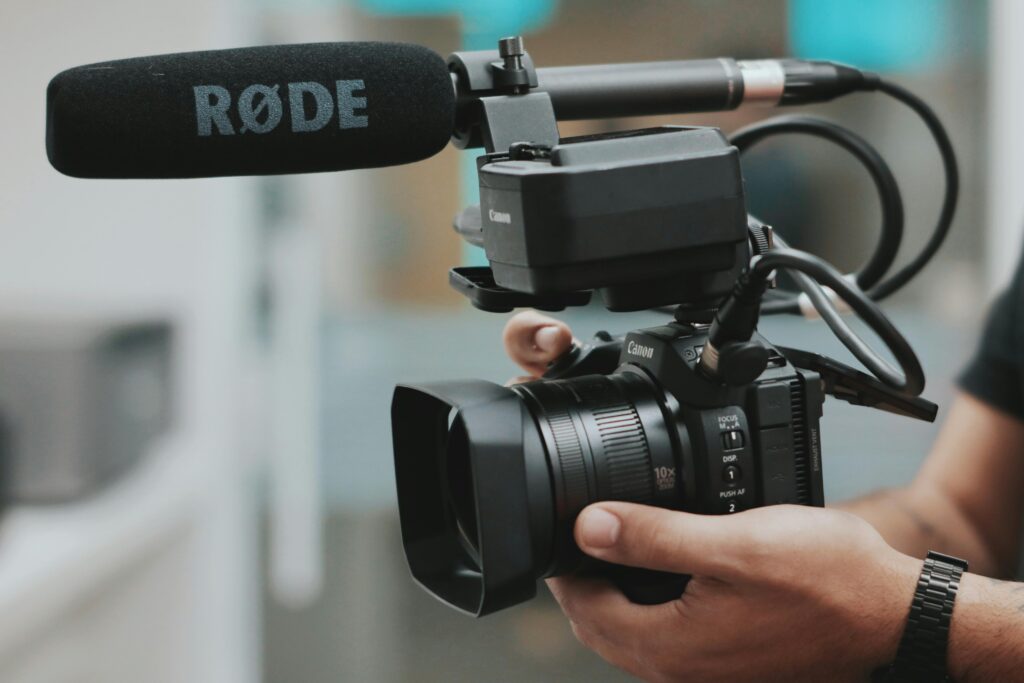
Selecting the right camera is a pivotal decision in any video production journey, shaping the quality, style, and versatility of your content. With a myriad of options available, navigating the technical landscape can be overwhelming. However, fear not! This guide is crafted to demystify the process, empowering you to make an informed choice tailored to your unique needs and aspirations. From understanding your production requirements to dissecting key technical factors, embark on this journey to find the perfect camera companion for your creative endeavours.
Understanding Your Needs
Before delving into the technical aspects of cameras, it’s essential to understand your specific requirements. Ask yourself the following questions:
What type of videos will you be producing? Whether it’s documentaries, music videos, interviews, or vlogs, different genres may have varying demands in terms of image quality, mobility, and versatility.
Where will you be shooting? Consider whether you’ll primarily be shooting indoors, outdoors, or in challenging environments like low light conditions or extreme weather.
What is your budget? Determine how much you’re willing to invest in your camera setup, including lenses, accessories, and additional equipment.
Key Factors to Consider
Once you’ve clarified your needs, it’s time to delve into the key factors that should influence your decision:
1. Sensor Size
The size of the camera sensor plays a significant role in determining image quality, especially in low light conditions and depth of field control. Generally, larger sensors produce better image quality with less noise. Full-frame sensors offer superior performance but come at a higher cost, while smaller sensors like Micro Four Thirds are more budget-friendly.
2. Resolution and Codec
The resolution of the camera determines the clarity and detail of your footage. While 1080p (Full HD) remains standard for many productions, 4K resolution is becoming increasingly popular for its higher quality and flexibility in post-production. Additionally, consider the codec used by the camera, as it impacts the efficiency of editing and the final output quality.
3. Frame Rate
The frame rate determines the smoothness of motion in your videos. Most cameras offer standard frame rates like 24fps (frames per second) for a cinematic look and 30fps for broadcast or online content. Higher frame rates, such as 60fps or 120fps, are ideal for slow-motion footage and capturing fast-paced action.
4. Lens Compatibility
Choose a camera system with a wide range of compatible lenses to meet your creative needs. Interchangeable lens cameras, such as DSLRs and mirrorless cameras, offer versatility and the ability to adapt to different shooting scenarios. Consider investing in high-quality lenses for optimal image quality and creative control.
5. Autofocus and Stabilization
Efficient autofocus and stabilisation systems are essential for capturing sharp and steady footage, especially when shooting handheld or in dynamic environments. Look for cameras with advanced autofocus technology, such as phase detection or dual-pixel autofocus, and built-in stabilisation mechanisms to minimise camera shake.
6. Ergonomics and Portability
Consider the ergonomics and portability of the camera, especially if you’ll be shooting for extended periods or on the go. Choose a camera that feels comfortable to hold and operate, with intuitive controls and a durable build quality. Compact mirrorless cameras are popular choices for their lightweight design and versatility.
7. Connectivity and Workflow
Evaluate the camera’s connectivity options and workflow compatibility with your existing equipment and editing software. Look for cameras with built-in Wi-Fi, Bluetooth, or USB-C connectivity for seamless file transfer and remote control capabilities. Compatibility with industry-standard editing formats like ProRes and RAW can streamline post-production workflows.
Making an Informed Decision
Armed with this knowledge, you’re now equipped to make an informed decision when choosing the right camera for your video production endeavours. Take the time to research and compare different models, read reviews, and, if possible, test the cameras firsthand to ensure they meet your expectations. Remember that the perfect camera is the one that best aligns with your creative vision, budget, and technical requirements. Happy shooting!








